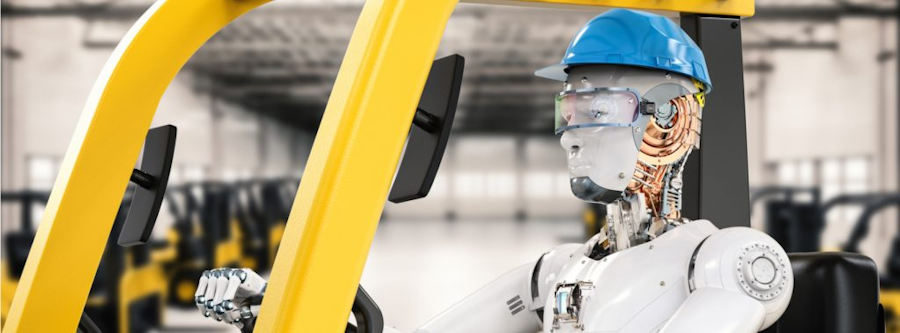News
Will Driverless Forklifts Improve Productivity?

There's a lot of talk in the news right now about whether robots will be taking our jobs. It's already a reality that automated forklifts are emerging from production lines around the world. But will driverless forklifts improve productivity?
Benefits of Driverless Forklifts
Driverless forklifts, also known as Automated Guided Vehicles (AGVs) reduce the number of stops usually caused by human operators. They don't have the physical limitations of humans, nor the inclination to be lazy. Driverless forklifts can also be synchronized to keep up efficient traffic flow in a way that only automated systems can.The increased productivity in areas of repetitive operation, saves not only time but also money, as fewer goods are likely to be damaged during the tasks for which AGVs are most useful.
Flexibility & Productivity of Driverless Forklifts
The absence of a human driver means less risk of death, injury, or inventory loss. It also means no need for shift changeovers, lunch breaks or holidays. Driverless forklifts can run day and night, stopping only for refueling or maintenance. So even though driverless forklifts can't cut corners like manned forklifts and operate more slowly, they can increase productivity thanks to continuous operation.For warehouses operating in global markets, the site never sleeps. During busy seasonal periods, when overtime and double shifts are called for, tiredness leads to mistakes. When human effort becomes a liability, the potential of driverless forklifts really shines.
Driverless Forklifts and Site Safety
Accidents in the workplace cost money and worse, can cost lives. Statistics indicate that forklift accidents cause at least one fatality every 6 weeks, giving forklift operators one of the most dangerous jobs in the UK.As such, it stands to reason that separating humans and manual handling equipment reduces the potential for accidents, especially when you consider that driver error is the primary cause of forklift accidents.In addition to preventing driver error, driverless forklifts allow for the unmanned lifting of extreme loads - a dangerous operation for any operator, or those nearby.
Disadvantages of Driverless Forklifts
There is still value in human operators in an automated warehouse. There are also manual operations that do not fit with the operation of driverless forklifts. In order to operate a successful, automated operation, you need to have a strict and clearly defined schedule.The downside to driverless forklifts is that they don't react well to ad hoc requests and sudden changes. The rigidity of efficiency comes at the cost of flexibility. Manual forklift trucks allow operators to change plans on the fly and reprioritize much faster than automated systems.Human operators are far more capable of identifying issues in the immediate environment and any problems with picking orders. If an order, upon inspection, is clearly incorrect, an automated system won't know, as it's just looking at numbers, but a human operator can assess and make judgments on pick choices that a driverless forklift cannot.For obstacle detection, the historical contact-sensitive mechanical bumpers, as well as the traditional laser scanner used today both, have limitations – some do not detect hanging objects that a human would see, so the technology still has a way to go.Automation has its advantages but is not without its limits. While they provide extra safety and efficiency, they can be limited by sudden changes in schedule due to their lack of flexibility. In ten years, that might have changed, but right now, a balanced and considered approach to automation and making effective use of traditional forklifts is the best way forward.
Subscribe
Keep up to date with PHL and all things forklift machinery.